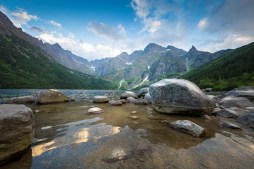The Impact of Nature on Art: A Look at the Evolution of Landscape Painting
Landscape painting has a rich history that reflects not only the change in artistic styles but also humanity’s evolving relationship with nature. This article explores the various phases of landscape painting, illustrating how artists have captured the natural world across different eras and movements.
The Early Beginnings: Landscapes in Antiquity
The roots of landscape painting can be traced back to ancient civilizations, where nature was often depicted in murals and pottery. Early examples include frescoes from Ancient Egypt and wall paintings from Ancient Greece, where landscapes served as backgrounds for mythological scenes or were integrated into larger narratives. These early landscapes were not focused on realism but rather on enhancing the storytelling aspect of art.

The Renaissance: Nature Comes Into Focus
During the Renaissance, artists began to take a more scientific approach to their depictions of nature. Artists like Leonardo da Vinci and Raphael emphasized perspective and anatomical accuracy, allowing landscapes to play a crucial role in their compositions. The invention of oil paint also enabled greater detail and richness in colors, culminating in stunning works such as “The School of Athens” by Raphael which features a beautifully rendered background that showcases the importance of nature even within architectural settings.
The Baroque Period: Drama and Emotion in Natural Settings
In the Baroque period, landscape painting evolved further with an emphasis on drama and emotion. Artists like Claude Lorrain and Jacob van Ruisdael created dynamic compositions that included expansive skies, towering trees, and dramatic lighting effects. Their works often conveyed deeper meanings about mankind’s relationship with nature through vivid color palettes and intricate details that drew viewers into these beautiful yet sometimes turbulent natural scenes.
Romanticism: Celebrating Nature’s Sublime Beauty
The Romantic era marked a shift towards expressing emotions through art, particularly in relation to nature. Artists such as Caspar David Friedrich embraced themes of awe and reverence for the natural world. Paintings like “Wanderer above the Sea of Fog” highlighted individual experiences against vast landscapes, suggesting that nature is both beautiful and overpowering—a reflection of human emotions during this time period.
Impressionism to Modernism: A New Perspective on Landscapes
As we moved into Impressionism, artists like Claude Monet broke away from traditional techniques to capture fleeting moments in natural light. This led to innovative approaches such as loose brushwork that suggested movement rather than detailing every element meticulously. The evolution continued into modernist movements where abstract interpretations allowed artists like Georgia O’Keeffe to explore landscapes through bold colors and forms that challenged conventional representations.
From ancient times to modern day, landscape painting has continually adapted alongside shifts in cultural perspectives towards nature. Each era brought new techniques and philosophies reflecting humanity’s ongoing dialogue with our environment—showing how profoundly interconnected art is with our experience of the natural world.
This text was generated using a large language model, and select text has been reviewed and moderated for purposes such as readability.


